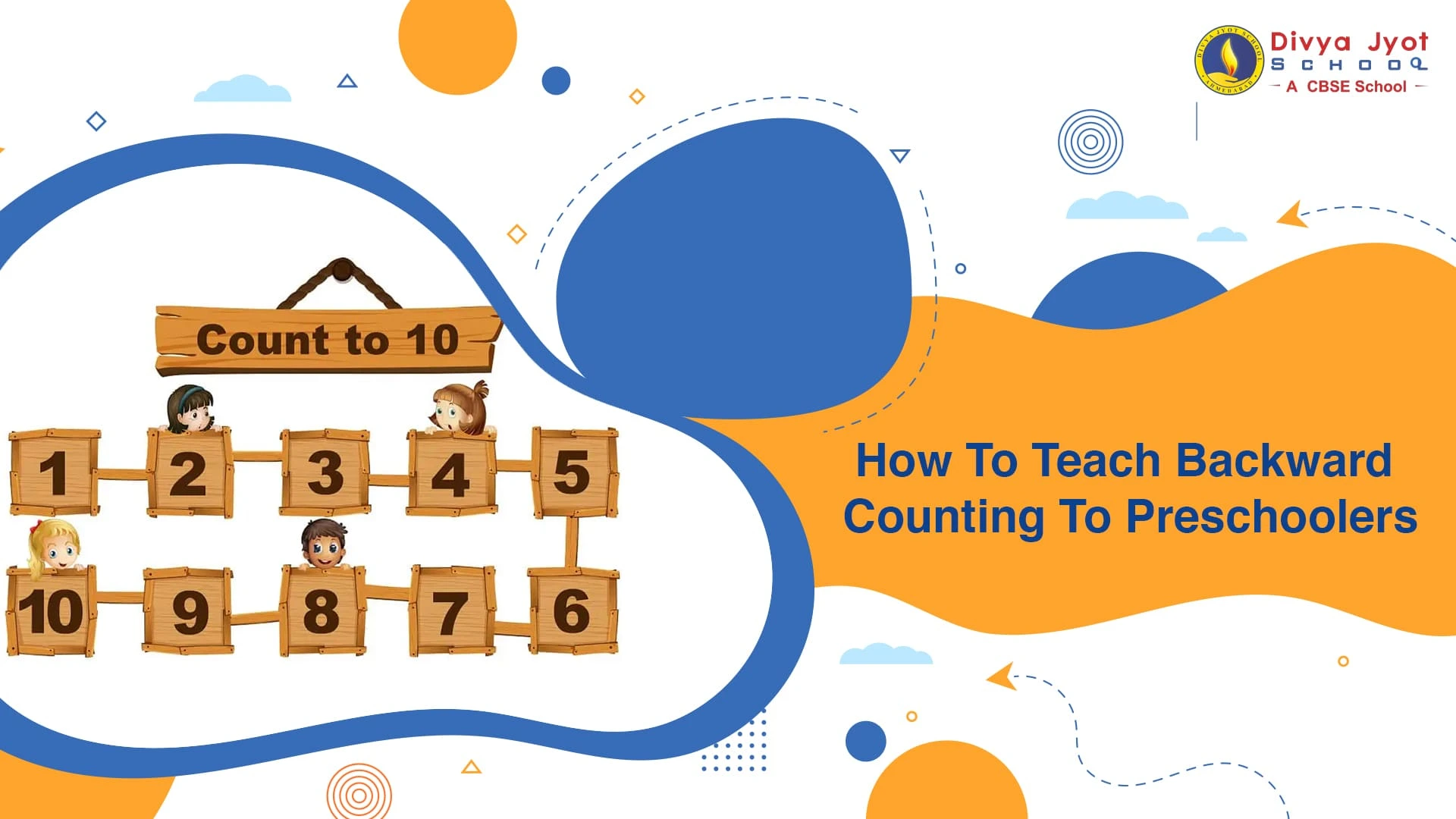Before formal education begins, we build a child’s world with alphabets and numbers. Among these early skills, mastering backward counting 100 to 1 is a critical leap forward.
This isn’t just about reciting numbers. It’s the essential bedrock for:
- Advanced Math Skills: It is a direct development of the concept of subtraction.
- Mental Maths Proficiency: It improves numerical flexibility and pattern recognition.
- Applied to the Real World: Intuitive with regard to time, schedules, and games.
When it all goes right, and we teach backward counting 100 1, it makes complex future concepts easier, and children have a massive and self-assured head start.
What is Backward Counting?
Backward counting is simply counting numbers in reverse order. It’s the skill of starting from a given number and saying the numbers that come before it. A perfect starting point is back counting 10 to 1.
This skill is the invisible foundation for subtraction. When a child chants “10, 9, 8…”, they are physically experiencing the concept of “taking away one” with each number. It transforms the abstract idea of subtraction into a tangible, predictable pattern they can hear and feel, making formal math later on far less intimidating. It’s mental math in disguise
Ideal Age to Start Backward Counting
The backward counting activities in kindergarten are suitable for children aged 4 to 6 years old.
The first signs of development to look at are the following:
Strong Number Recognition: They are sure to know how many there are up to 10.
Increasing Attention Span: They are able to concentrate on a brief, structured task of between 5-10 minutes.
Forward Counting: They are able to count series forward without omitting any numbers.
When your child displays these symptoms, then his brain is ready to solve reverse sequences! The concept of using backward counting activities to introduce kindergarten at this stage of their cognitive development is an ideal fit since they find the learning process natural and entertaining, without a feeling of frustration.
Step-by-Step Guide: How to Teach Backward Counting Effectively
Teaching back counting 10 to 1 is easiest with a scaffolded approach, moving from hands-on to mental math.
Phase 1: Concrete (They Can Touch It)
Start Small: Use 5 physical objects (blocks, toys). Remove one at a time while counting down: “5… (remove one) 4… (remove one) 3…”
Number Line Hop: Draw a line of numbers on the ground. Let them hop backwards from 10 to 1, saying each number aloud.
Phase 2: Representational (They Can See It)
Visual Aids: Use a chart or flashcards with descending numbers. Point to each number as you count back together.
Engaging Songs: Leverage nursery rhymes like “Five Little Monkeys” or “Ten in the Bed” that naturally incorporate back counting 10 to 1.
Phase 3: Abstract (They Can Think It)
Verbal Practice: Once confident, challenge them to recite it without any visual or physical aids.
Integrate Play: Ask, “If you have 3 cookies and eat one, how many are left?” This connects the skill to subtraction.
Fun Backward Counting Activities
Ditch the drills! The best backward counting activities for kindergarten blend movement, rhythm, and sensory play to make concepts stick.
1. Get Them Moving (Kinesthetic Learning)
Countdown Hopscotch: Draw a hopscotch grid numbered 10 to 1. Kids jump and shout the numbers backwards.
Jump & Count: Have them jump on the spot, counting down with each jump: “10!” (jump), “9!” (jump).
2. Engage the Senses (Sensory Play)
Block Tower Smash: Build a tower of 10 blocks. Smash it down one block at a time, counting back from 10 with each crash!
Clapping Rhymes: Clap once for each number in a countdown sequence. Pair it with classic rhymes like “Five Little Ducks.”
3. Simple Games (Visual & Auditory)
Flashcard Race: Scatter flashcards numbered 1-10. Have them race to arrange the cards in reverse order.
Roll and Count Down: Roll a dice. Whatever number it lands on is your starting point for a quick countdown.
The key to effective backward counting activities is to match the energy of your child. When their whole body is engaged, their brain is fully learning.
Common Challenges & Teacher-Approved Solutions
It’s completely normal for kids to hit snags while learning. Here’s how to troubleshoot common issues without frustration.
Challenge 1: Mixing Up the Order or Skipping Numbers
The Hack: Use a Visual Anchor.
Number Line Lifeline: Keep a number line visible. Pointing to each number as they count provides a concrete visual guide that prevents skipping.
Storytelling: Frame it as a “countdown to blastoff!” Stories create a narrative that makes the sequence more memorable than a random list of numbers.
Challenge 2: Short Attention Span or Losing Focus
The Hack: Make it Physical & Relevant.
Incorporate Movement: Turn it into a game of “Countdown Simon Says” or have them take a step back with each number.
Real-Life Connection: Count down the stairs as you walk down, or count backwards as you put away 10 toys. This anchors the skill in everyday life, proving its usefulness.
Challenge 3: Frustration with Larger Sequences (e.g., past 10)
The Hack: Chunking.
Break it into smaller, manageable pieces. Master 10-1 first, then 15-10, and finally 15-1. Celebrate these small victories to build confidence for the larger task.
The Reinforcement Dream Team: Parents & Teachers
Mastering backward counting thrives on a partnership. Here’s how each role uniquely contributes to building this skill.
In the Classroom: Structured & Social Learning
Routine Integration: Teachers weave backward counting activities for kindergarten into daily rituals—counting down to recess, lining up, or calendar time. This provides consistent, low-pressure practice.
Peer Play: Utilizing group games and songs fosters a social learning environment where children learn from and motivate each other.
At Home: Informal & Fun Practice
Seize the Moment: Parents can reinforce learning naturally throughout the day. Count down the cookies left on the plate, the steps to the car, or during play.
Positive Encouragement: The home is the ideal place for celebrating effort, not just perfection. A high-five for a trying builds confidence far more than correcting every mistake.
The Winning Strategy for Both: Consistency is Key
The magic happens when both environments use short, fun, and consistent practice. A 2-minute countdown game daily is far more powerful than a 30-minute weekly drill. This collaboration ensures the child sees the skill as a normal, useful part of their world, not just a school lesson.
Conclusion
In essence, mastering backward counting is far more than a simple recitation of numbers; it is a fundamental cognitive building block. By integrating playful, consistent backward counting activities into both learning and daily life, we equip children with the intuitive understanding of numerical relationships needed for subtraction and mental math.
This collaborative effort between parents and teachers to make learning engaging doesn’t just teach a skill, it builds the confidence and foundational prowess for a child’s entire future relationship with mathematics.





